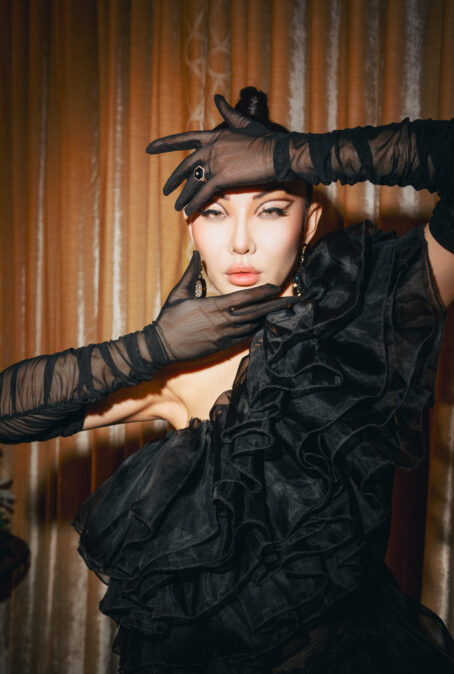
Mihano Momosa Dress
With more time on our hands this week, I wanted to talk to skincare today! Did you know that skincare layering can actually be bad for you? Let me tell you more… It’s no surprise that there are new products launching daily, targeting specific concerns – or even claiming to have found that next “miracle” ingredient. As buyers, we cave into great marketing and buy what sounds and feels good, then mix it all together and slap it across our faces. Turns out, not all ingredients are compatible – and that less can really be more! If you’ve ever wondered if there was a right way to layer skincare products, you’re absolutely right and I’m going to be sharing more on that below!Also, it’s a great time to shop for skincare because you can take 25% off almost all beauty products at Neiman Marcus!
…
…

Cleansing
The cleansing process is actually the easiest part, and I’m sure most of you have that figured out. Start by removing your makeup with micellar water (or some other makeup remover) followed by an oil-based cleanser to remove any extra reside. Then, a final cleanse with a face wash of your choice. After cleansing comes toning and essence if that’s your thing.
…
…

Serums
Layering serums is where it starts to get tricky since this is usually where the magic happens. As I alluded, not all active ingredients are compatible, which means your skin may end up irritated if you mix too many solutions. The other outcome is that you won’t see results at all. To help you guys layer skincare products, I’ve outlined the most popular ingredients below:
Retinol
Retinol is one of my most-loved ingredients because it promotes cell turnover and also delivers the fastest results for me in a short timeframe. The only thing is that it can be irritating especially if you already have sensitive skin. So with that in mind, refrain from mixing retinol serums with other resurfacing ingredients like AHA/BHA acids and benzoyl peroxide, which can over stimulate the skin. Dermatologists also recommend avoiding retinol and vitamin C, and instead using vitamin C during the day and retinol at night.
Retinol, however, is super effective with hydrating ingredients like hyaluronic acid, ceramides, and niacinamide.
…
…
Vitamin C
Vitamin C is great because it’s packed with antioxidants that can combat skin damage caused by the sun and other environmental factors. It works to lighten dark spots and reduce visible signs of aging. However, you should not use vitamin C with benzoyl peroxide as it can oxidize the vitamin C and make it useless.
As for what to pair it with – try ferulic acid, an antioxidant that helps with rejuvenation. Vitamin C is also great for layering under SPF during the day.
…
…
Niacinamide
Niacinamide, also known as vitamin B3, has grown in popularity in recent years due to its ability to even out the skin tone and visibly minimize pores all the while improving hydration. That being said, you should avoid mixing it with acidic skincare ingredients, such as AHA/BHA acids and vitamin C. All skincare fanatics know that vitamin C, although effective, can be fickle to work with. Both ingredients can become inactive when mixed. Other than that, niacinamide should complement everything else in your skincare routine!
…
…
AHA’s/BHA’s and Benzoyl Peroxide
I decided to group these two together since they’re often used to combat acne. Note that dermatologist often recommend that you don’t mix them as they can cause skin irritation.
Acids refer to salicylic, glycolic, and lactic acids, which improve skin texture and help treat acne. They’re great to use in conjunction with hydrating ingredients as well as those that soothe the skin (like glycerin). However, you should refrain from mixing them with retinols.
Benzoyl peroxide is notorious for treating acne but can cause dryness. Like AHA’s and BHA’s, you can use them with hyaluronic acid, peptides, ceramides, and most moisturizers. They’re also great to pair with SPF during the day. Just don’t mix them with retinol and prescription acne medication.
…
…

Sealant
All serums need to be sealed with a moisturizer or oil as they contain active ingredients that you want to penetrate the skin. For maximum effectivity, you want to lock the ingredients in place with something richer. If you prefer facial oils over a moisturizer, remember to wait a few minutes after applying the serums to let them fully absorb before pressing in the oil. If you’re using an eye cream, dab it under your eyes after the serum but before the final layer. Don’t forget to apply SPF daily during the day too!
…
…
I hope you guys learned more about how to layer skincare products today! Let me know if this was helpful in the comments!







